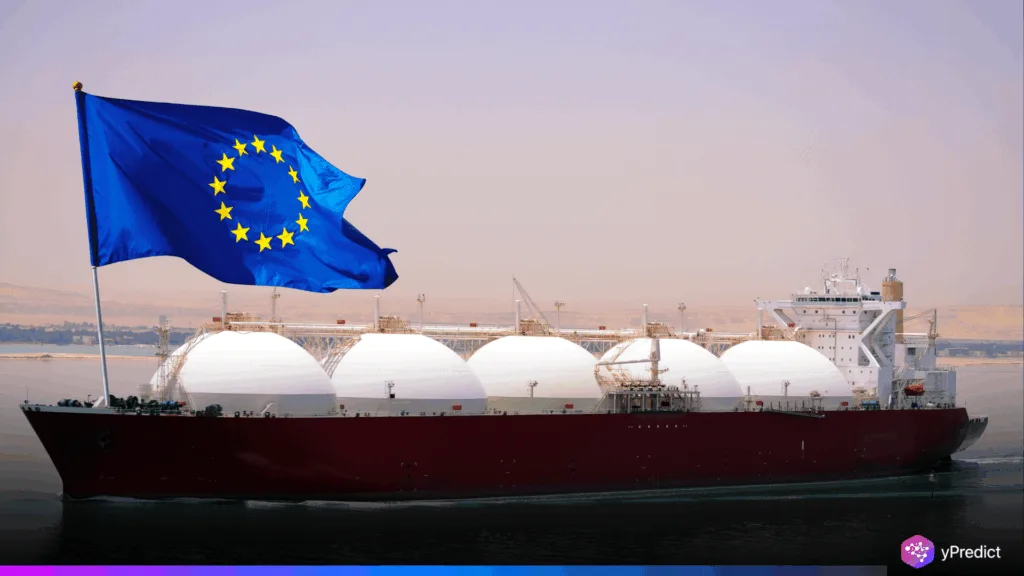
The European Union’s increasing LNG dependency is making its trade commitment with the US more urgent. The EU has also pledged to import additional energy from the US in the form of oil, LNG, and nuclear fuels. This is also contained in a colossal transatlantic energy agreement that will reach a staggering $750 billion.
Yet, the absence of infrastructure, market volatility, and declining demand for gas render it uncertain whether these goals will be achieved. Moreover, while the US goes on to increase its export capacity, Europe’s challenge may be to absorb what it commits to buy.
How Far Can LNG Dependency Drive EU Trade?
The EU’s shift away from Russian energy has dramatically increased its LNG dependency, with US shipments playing a central role. The bloc expanded LNG regasification facilities’ capacity after Russia invaded Ukraine. This amounts to over 70 Bcm, or nearly 250 Bcm annually. Additionally, this expansion benefits US exporters, who in early 2025 supplied 70% of all US LNG exports to Europe.
The US still imports roughly $100 billion worth of energy each year. The European Commission says the $750 billion deal is based on good assessments. Thus, a significant gap needs to be filled. Even if energy imports double, analysts note that it is still unlikely that they will reach $250 billion a year in the current environment. Furthermore, it is unclear what goes into the deal’s total. The inclusion of current long-term contracts is still up for debate.
Energy Imports Risk Overshooting Falling EU Needs
The European Union intends to completely stop importing Russian gas by 2027 to make space for more US LNG. However, the amount of gas the region actually needs is unknown because gas demand is trending downward.
The EU’s gas consumption dropped by 70 Bcm from 2022 to 2025. Although rising in 2024, consumption is still much lower than before the crisis. In addition, if the current trends persist, future energy imports could be much less than the amount promised.
Can US LNG Growth Meet EU Demand Needs?
The United States is expected to have an operational liquefaction capacity of 259 million tons by 2030. There are ongoing, planned, and under-construction projects that support this. Moreover, it offers the adaptability to change flows in reaction to market prices.
However, flexibility has drawbacks. US exporters may shift volumes away from Europe if Asian buyers provide greater returns. Despite the reliance on LNG, market forces, not policy, will decide actual delivery. Experts contend that while governments can encourage agreements, they have no control over the final location of gas.
Is LNG Dependency Enough to Meet EU Goals?
The strategic shift of the EU towards US energy imports is an indication of its desire to access secure and diversified sources of energy. This goal may not be what is demanded locally, though. This $750 billion trade goal might not be achieved because of contract uncertainty, price volatility, and falling gas demand. Moreover, while LNG dependence fosters cooperation, policy alignment with market dynamics is essential for success. Europe’s gas demand may decline further if renewables continue to grow.







